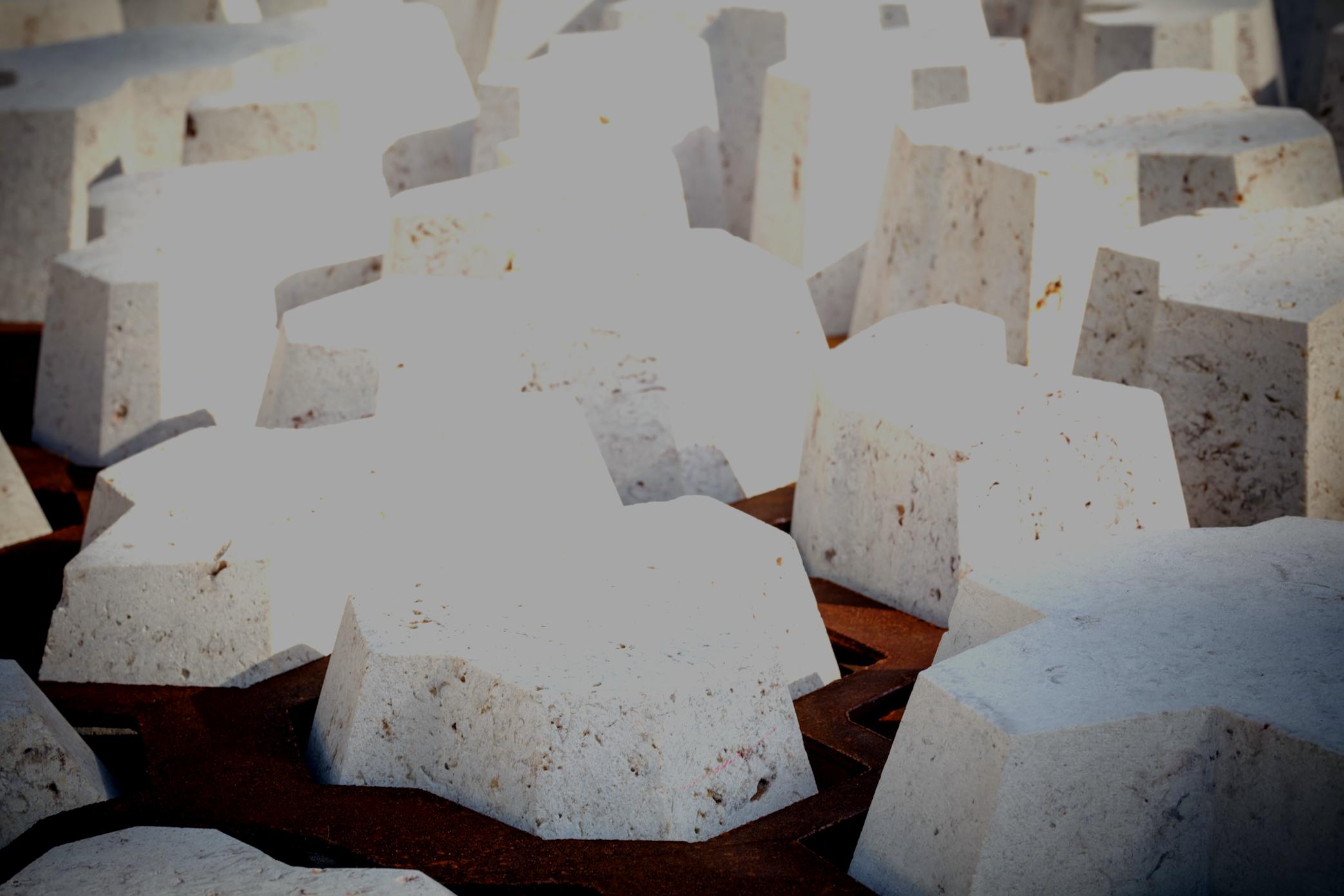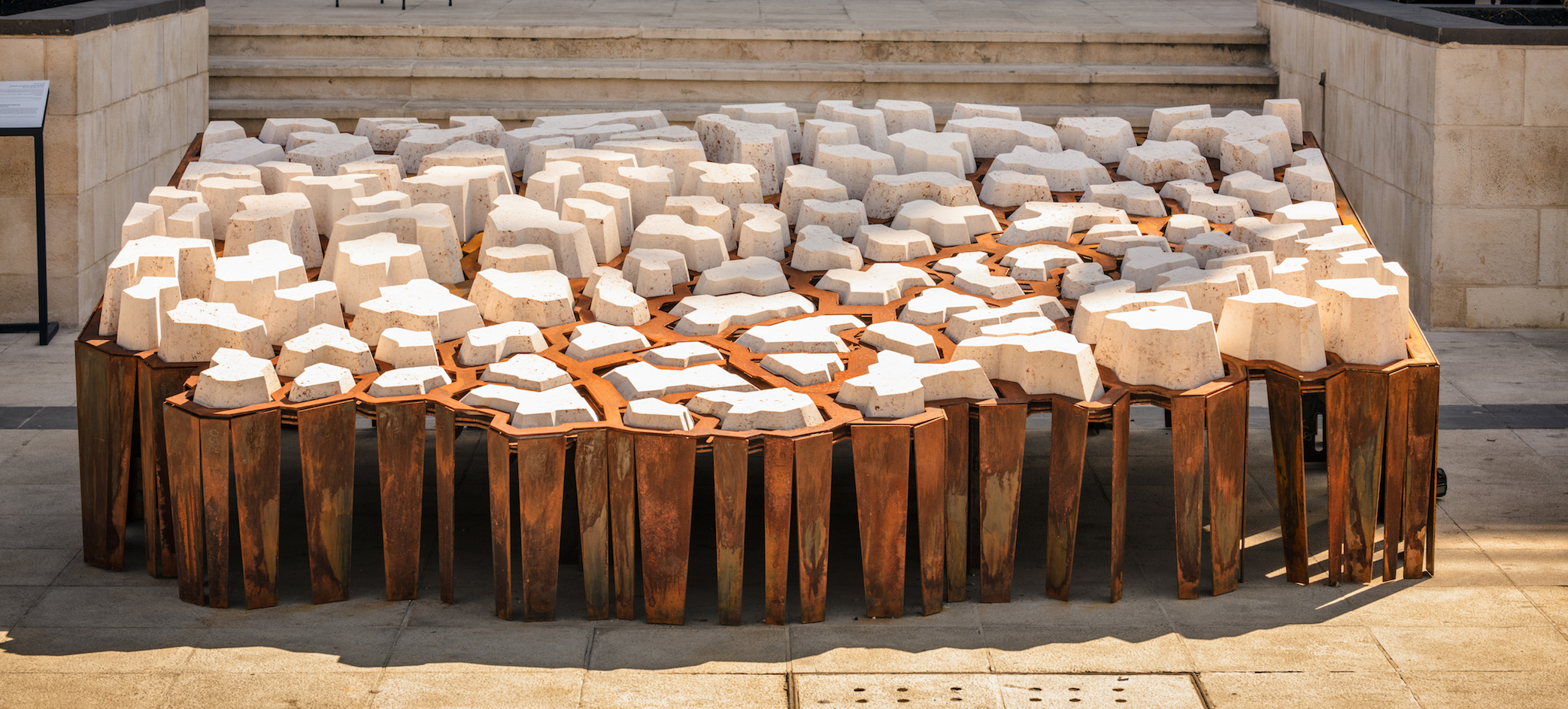

These designers shed light on one of the most pressing challenges facing current and future Jordanian generations – drawing attention to the Kingdom’s critical issue of water scarcity in the hopes of initiating a dialogue and advocating for responsible water consumption.
Architect and urban designer Amal Ayoub makes a statement with ‘Salt Pond’. A commentary on the current condition of the Dead Sea, the landscape installation, located at the entrance of the Hangar Exhibition, is a pond that fills up and empties out every forty minutes to reveal salt crystals at its center. A platform placed in the center of the circular salt bed allows an individual to stand and experience the process of the water draining into the base until the entire pond’s bottom is visible.

The time interval gives viewers the chance to see the pond in its two contrasting states – once before entering the Hangar Exhibition, and once after exiting it. This personal experience draws attention to the profound alterations in water levels of the Dead Sea. The installation creates a paradoxical dialogue between the aesthetic and mineral-rich qualities of natural salt formations, and the underlying currents of alarm at the new ‘dry’ Dead Sea. As Ayoub notes, “it promotes a balance between sustainable industry and efforts to revitalize the water body through design and conservation initiatives.”

‘ARID’ is a design installation by MEAN (Middle East Architecture Network). The work is symbolic of a post-drought landscape in Jordan that calls attention to the imminent problem of water scarcity in the country. The piece expresses itself in a geological landscape, resembling the cracked earth of a fractured topography in an arid environment.

ARID is a work made possible by seamless computational design and production methods. The sum of its parts were all hand-finished, implemented and made by local expertise and labor in Jordan.

A robotic CNC arm milled natural Jordanian stone from northern Jordan's Al Hallabat area, into individual pieces from geometric shapes generated by computer-programming, recreating the organic phenomena of ‘Fractured Cracking’. Plasma CNC cutters were then used to cut a steel base, assembled by a kit of parts, all designed digitally.

After Amman Design Week, the installation will be donated to the Mercy Corps Foundation. The objective of ARID is to aid Mercy Corps in their mission of raising awareness about the problem of depleting fresh water resources in the country. The novelty of the project’s materiality is an outcome of processing natural and rough materials with imperfections, juxtaposed with the precision of digital manufacturing.
A multidisciplinary collective consisting of visual artists Ahmad Sabbagh and Michael Schinköthe, UX designer and animator Ala’a Ali, digital designer Eyas Tayyem, and communication strategist and researcher Basheer Anani designed ‘The Water Table’, an installation that employs historical data and future projections to take users on a journey through time to highlight the severity of Jordan’s water crisis. The interactive table allows users to control the variables they wish to see simultaneously on the table’s surface, offering data such as the time period, and population rate. The Water Table also features expert forecasts regarding Jordan’s water resources and population to portray Jordan’s contemplated future.


